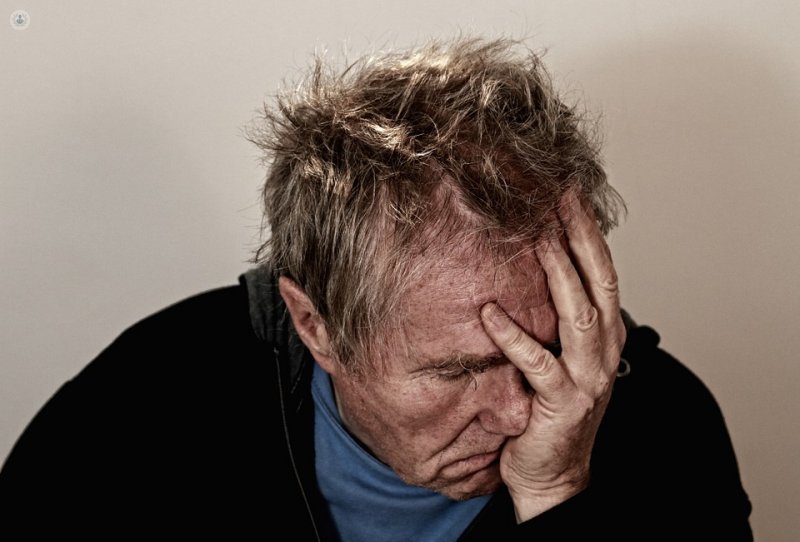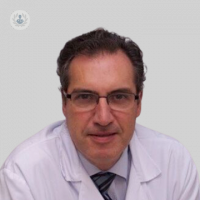Vertigo and its relationship to the ear
Written by: Vertigo is the perception of movement of the surrounding environment or movement of self due to impaired organs that regulate the balance located in the inner ear. Must be distinguished from acrophobia or vertigo tall, dizziness, imbalance or motion sickness.
Vertigo is the perception of movement of the surrounding environment or movement of self due to impaired organs that regulate the balance located in the inner ear. Must be distinguished from acrophobia or vertigo tall, dizziness, imbalance or motion sickness.
Why do we feel dizzy?
Maintaining balance is a complex system of reflexes that aims to allow keep the body upright and avoid falling and in which the otolaryngology part. It is composed of three systems: the vestibular system of the inner ear, the visual system and the proprioceptive system, the latter formed by tendons and ligaments of different muscle groups.
The three systems establish connections with the central nervous system and the cerebellum for our nervous system knows at all times, our position in the environment and thus the balance is maintained.
The vestibular system is in the inner ear and, after detecting the various cephalic and body movements, generates the activation of different muscle groups that allow us to keep staring into the environment through the vestibulo-ocular reflex and keep the upright position, avoiding fall, thanks to the spinal reflex lobby.
Vertigo occurs as a result of a failure or disease in the vestibular system of the inner ear and these reflections. Altering the vestibulo-ocular generates a variation in eye movements called nystagmus, which prevents the correct fixating on the environment. Nystagmus is responsible for the patient with vertigo perceives that he or his environment moves. Altering the lobby-spinal reflex facilitate the fall.
Causes of vertigo
By itself, vertigo is not a disease, but a symptom that can occur for various reasons. It may be peripheral, when the lesion is located in the inner ear; or central, for cerebellum or injury to the nervous system.
BPPV (BPPV) is the most common cause of peripheral vertigo. The patient note rotational vertigo, with the perception that everything is spinning when grave, turns in bed or even to raise his head. It is produced by otoliths that have broken off the utricle inward of the semicircular canals. The movement of otoliths from inside causes the rotational vertigo. Usually head movement triggers the vertigo usually always the same, as it is which is oriented in the same plane as the semicircular canal affection.
The treatment is to produce cephalic movements, aided by gravity, allowing remove otolith semicircular canal and return to utrículo. These maneuvers are effective replacement and healing in 90% of cases.
Vestibular neuritis: It consists of an inflammation of the vestibular nerve that leaves the inner ear to the central nervous system, leading to the cessation of function of the inflamed nerve. The patient suffers a crisis of rotational vertigo that stretches for several hours or days, followed by imbalance that can last several weeks.
Meniere 's disease: Meniere's syndrome is a disease of the inner ear in which they occur, over the years, recurrent crisis rotational vertigo accompanied by hearing loss and tinnitus (noises) recovering all or part after the crisis. Still, the repetition of these crises involves a progressive hearing loss that, over time, can become complete.
Currently, the intratympanic treatments have significantly improved the quality of life of patients with Meniere's disease and crippling vertigo crisis.
Other causes of peripheral vertigo inner ear disorder are labyrinthitis (inner ear infection) and acoustic neuroma (benign tumor of the vestibular nerve).
Central vertigo: Within central nervous system disorders, the most common are migraine - associated vertigo or vestibular migraine and vascular pathology.
Diagnosis of patients with vertigo
In order to make a correct diagnosis is essential to an accurate dialogue between the specialist and the patient Otolaryngology, followed by a vestibular clinical examination.
Other tests for diagnosis are the VNG and the study by the head impulse: both tests are based on the study of the vestibulo-ocular and eye movement:
- Videonystagmography in the presence of spontaneous nystagmus is studied and postural changes caused by temperature changes or ear through hot and cold air.
- In the head impulse or vHIT (video head I imposed test) studies how the eye reacts to a sudden movement of the head produced by the doctor.


